HARMONIA (Αρμονία)
“…we must imagine that the string is not a straight line but a circle” Johannes Kepler
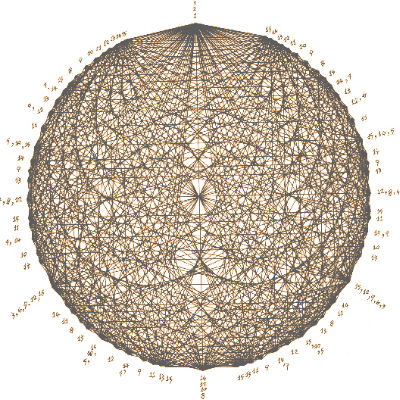
“Harmonia” is an impression upon a two-dimensional (symmetrical) Space and on one-dimensional (but bi-directional) Time. Both dimensions are informed by the same logarithmic relationships as those of the Pythagorean harmonic intervals. The best way to describe “Harmonia” is for you to imagine a vibrating string producing 64 overtones. The string is bent around to form a circle with the two ends of the string meeting at the top of the circle. The nodes of each overtone are connected to each other by diagonal lines. In the higher overtones these polygons and their diagonals cause phasing patterns at each of their respective appearances. In parallel to this “closed” string, imagine a string whose ends are two points in time. (In the case of “Harmonia”, these two points in time also determine the duration of the entire cycle of “Harmonia”.) Indebted to the harmonic philosophy of Pythagoras and Plotinus, the original drawings of “Harmonia” represent a classic case of “automatic writing” or psychography. The first of the series, much more complex than the one shown above, emerged spontaneously during a night in the fall of 1980 with only the help of rapidographs, a ruler, a compass, and a few sheets of architect’s velum (transparent) paper. Its completion required several days (and nights) of incessant drawing with no consciousness of process or end-purpose present. Although quite simple to detect now, it was a few days later that I realized that I was graphically representing in these Mandalas the same rhythmic matrix below that I had already used in other compositions during the preceding year. In the year 2008, composer, sound designer and computer programmer Bruno Degazio created the animation of “Harmonia” and since then “Harmonia” has been presented internationally as an audiovisual installation. —Christos Hatzis
Το «Αρμονία» (“Harmonia”) είναι ένα αποτύπωμα πάνω στον δισδιάστατο (συμμετρικό) χώρο και μονοδιάστατο (αλλά παλινδρομικό) χρόνο. Και οι δύο διαστάσεις διέπονται από τις ίδιες λογαριθμικές σχέσεις των Πυθαγόρειων αρμονικών διαστημάτων. Ο καλύτερος τρόπος να περιγράψω το «Αρμονία» είναι να φανταστείτε μία πάλλουσα χορδή με 64 αρμονικές, τα δύο άκρα της οποίας ενώνονται στην κορυφή δημιουργώντας ένα κύκλο. Οι κόμβοι της κάθε αρμονικής ενώνονται μεταξύ τους δημιουργώντας μοτίβα φάσης [phasing patterns] κάθε φορά που τα πολύγωνα των υψηλών ειδικά αρμονικών εμφανίζονται και εξαφανίζονται αντίστοιχα. Παράλληλα με την «κλειστή» αυτή χορδή, φανταστείτε μια χορδή της οποίας τα άκρα είναι δύο σημεία στον χρόνο. (Στη περίπτωση του «Αρμονία», τα δύο αυτά σημεία καθορίζουν την διάρκεια του έργου.) Επηρεασμένο από την αρμονική φιλοσοφία του Πυθαγόρα αλλά και αυτή του Πλωτίνου, τα πρώτα σκίτσα του «Αρμονία» υπήρξαν ένα κλασσικό παράδειγμα «αυτόματης γραφής» ή ψυχογραφίας. Το πρώτο της σειράς ξεκίνησε εντελώς αναπάντεχα στη μέση της νύχτας το φθινόπωρο του 1980, με ραφιδογράφους και ένα χάρακα πάνω σε αρχιτεκτονικό διαφανές χαρτί, και ολοκληρώθηκαν μετά μερικές μέρες και νύχτες συνεχούς εργασίας χωρίς καμία διακοπή και χωρίς ενσυνείδητη γνώση του δημιουργικού στόχου ή διαδικασίας. Παρ’ όλο τον εύκολο συσχετισμό που μπορεί να κάνει κάποιος τώρα, χρειάστηκα μερικές μέρες να διαπιστώσω πως οι «Μαντάλες» αποτελούσαν τη γραφιστική αναπαράσταση, ρυθμικής «μήτρας» που ήδη χρησιμοποιούσα σε άλλες συνθέσεις το προηγούμενο έτος. Το 2008 ο συνθέτης, ηχοσχεδιαστής [sound designer] και προγραμματιστής υπολογιστών Bruno Degazio προγραμμάτισε τα κινούμενα σχέδια του «Αρμονία» και από τότε το «Αρμονία» παρουσιάζεται διεθνώς σαν sound installation. —Χρήστος Χατζής
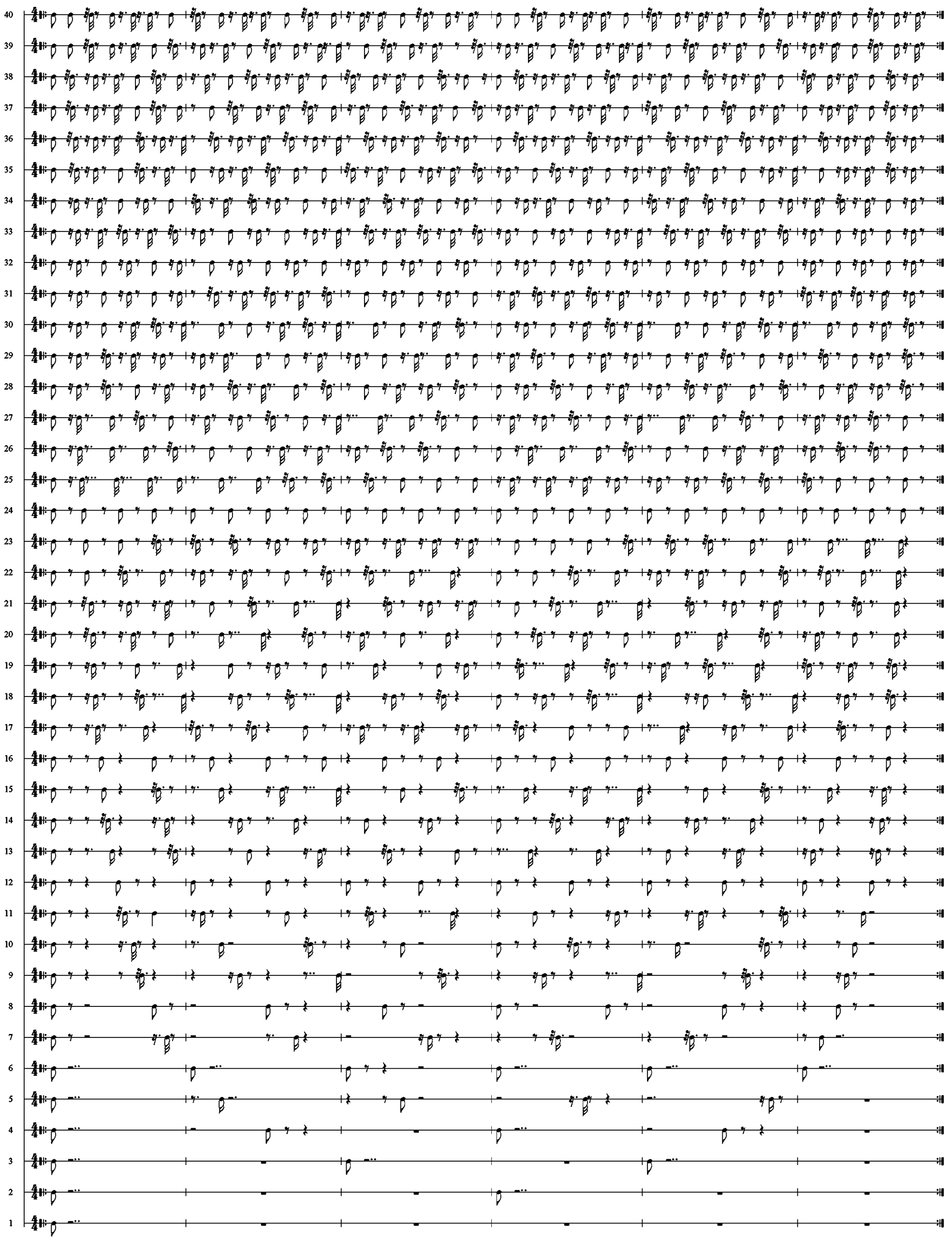
Still Images of Harmonia
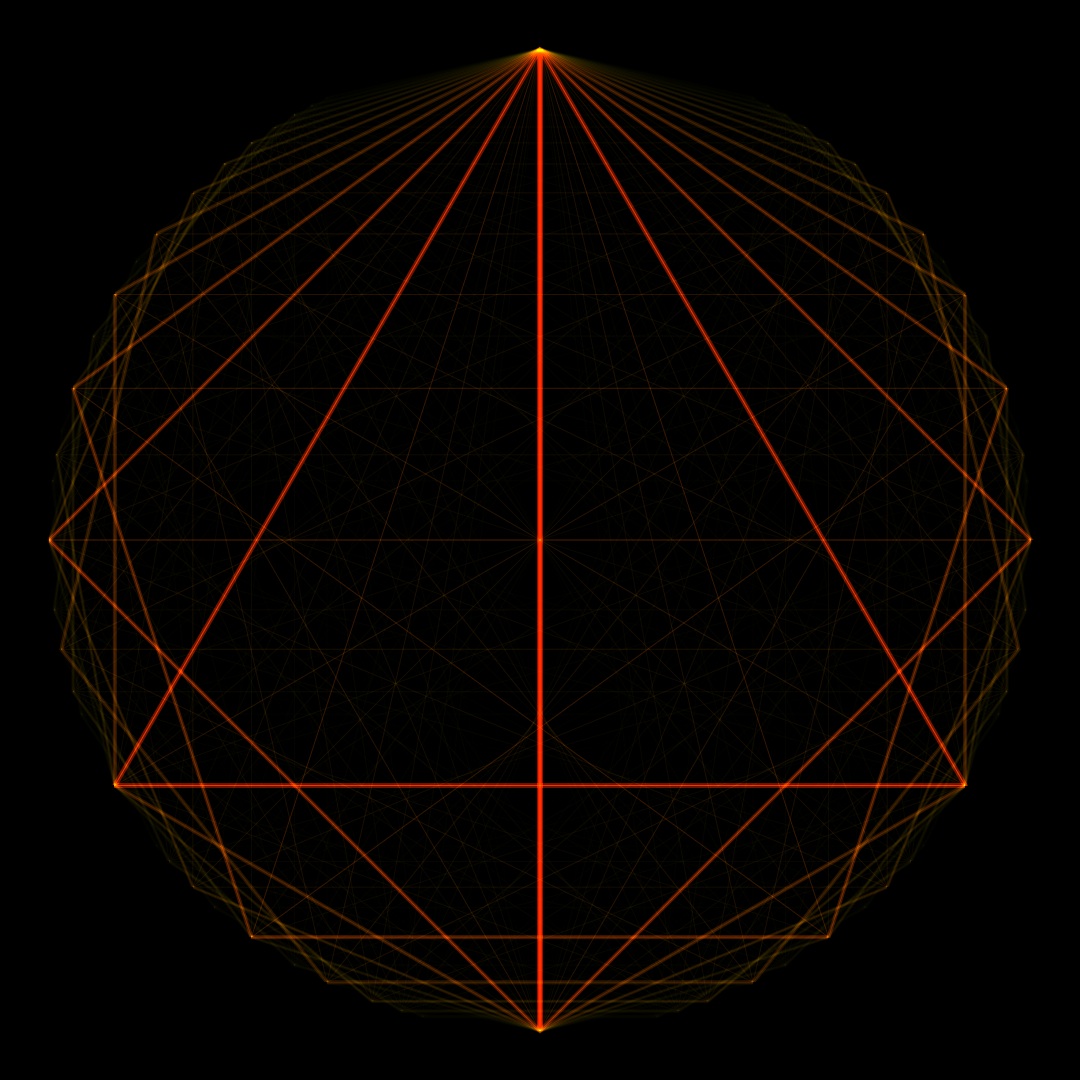
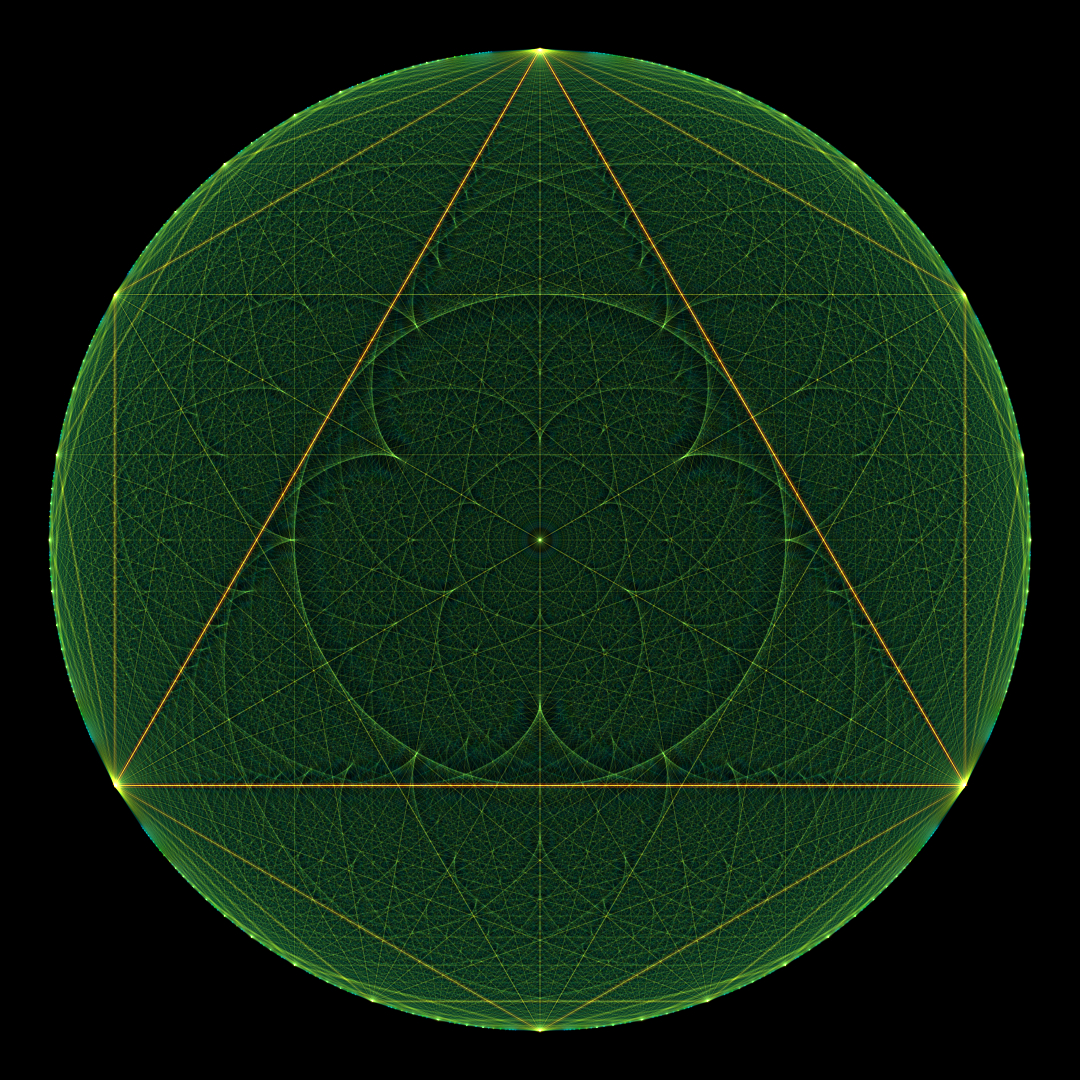
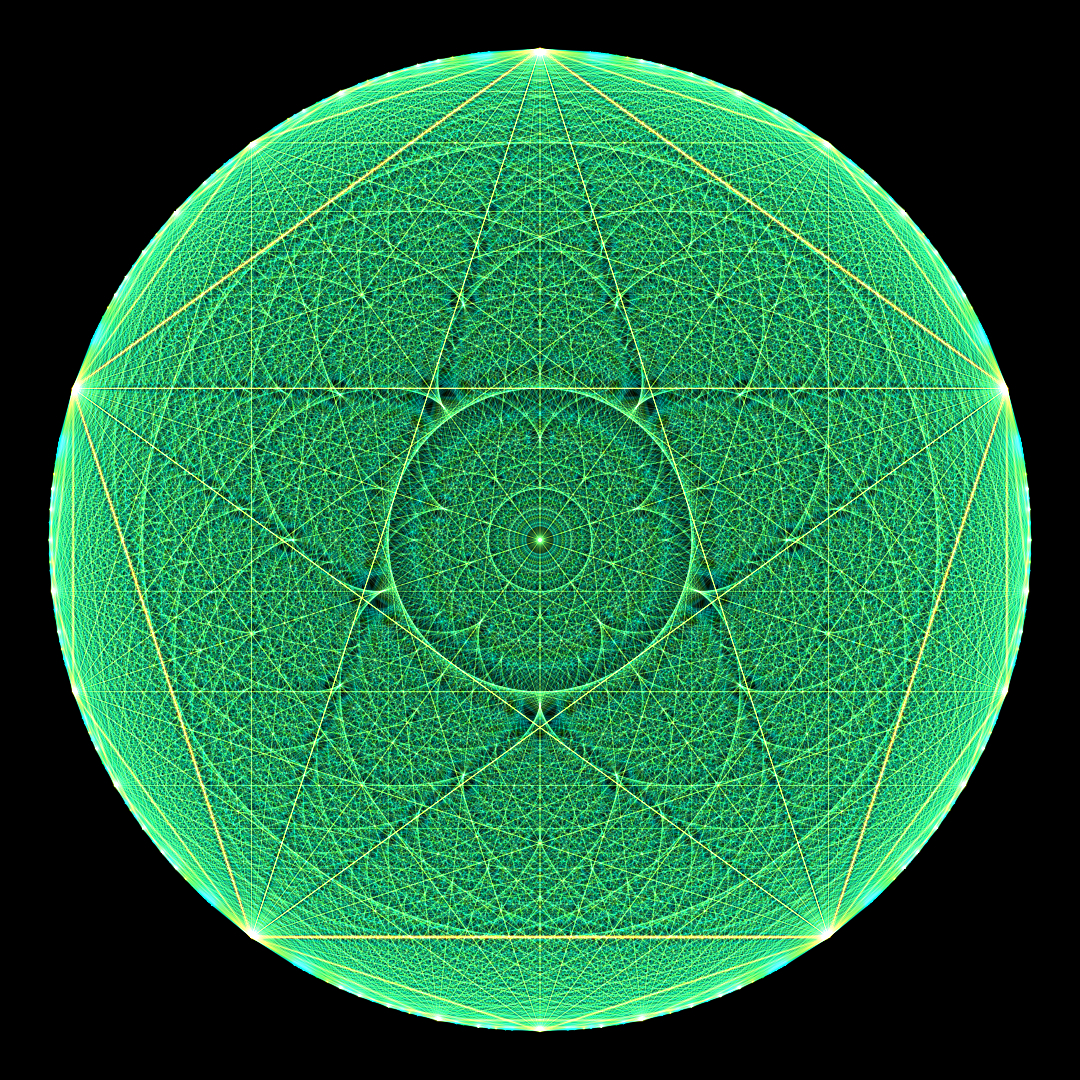
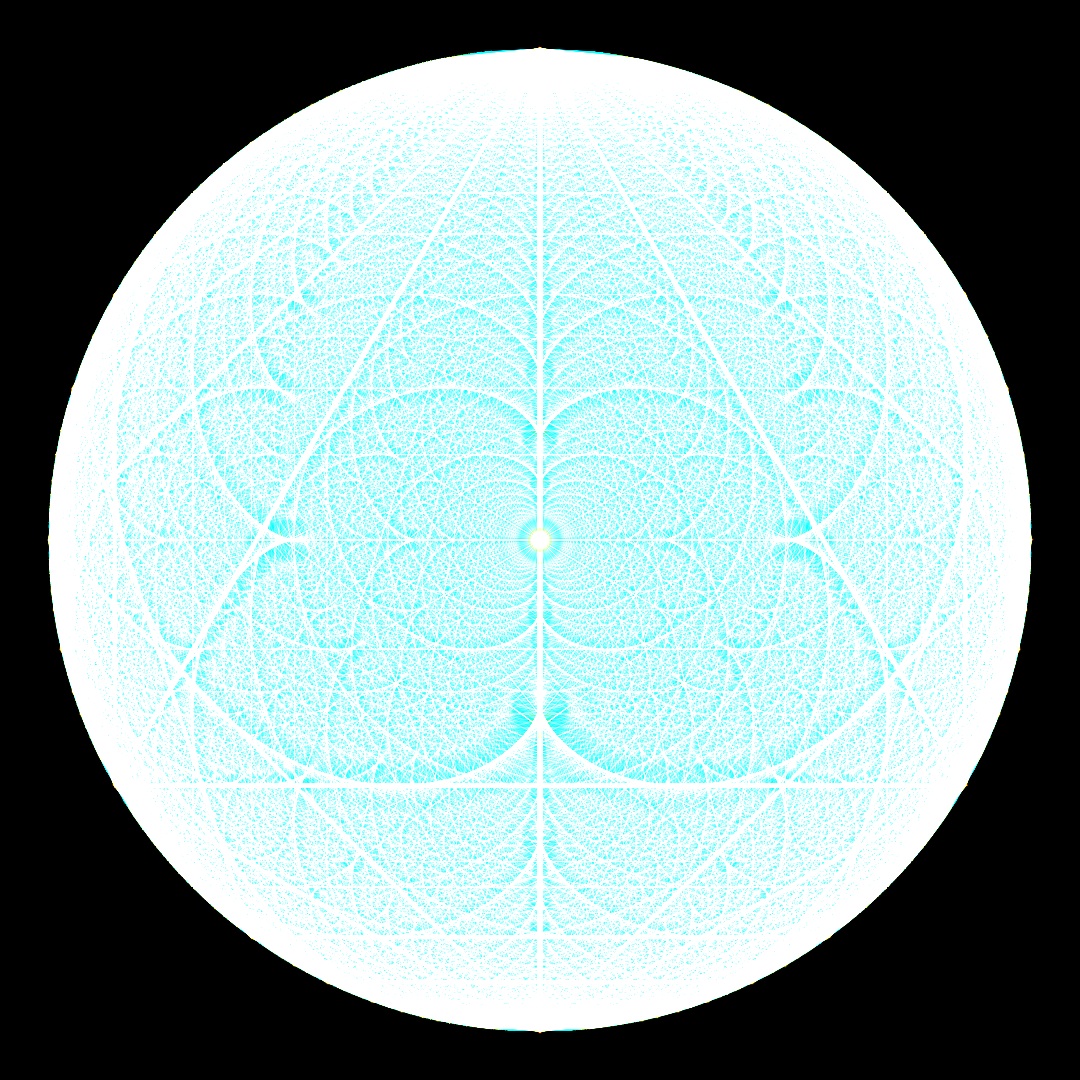
The Animation of Harmonia (Αρμονία)
Reviews & Comments
"You surely hit on an original idea back in 1980, with the fractal organization of music, and although I understand little about that I could appreciate the mobile geometry of the images, bringing life to a usually static medium. Seen in three dimensions, on a large screen, with good audio quality, I'm sure it would have a powerful effect, and perhaps give people ungifted with synaesthesia a taste of what it must be like to have that capacity. You have given new impetus to the rediscovery of Harmonics as the basis of music (and maybe of everything, as Hans Kayser teaches). Also, of all the systems that have sought to link geometry with harmony, from Ptolemy to Kepler and beyond, this is the most logically defensible. Like geometry itself, it combines a basic simplicity with infinite complexity. Your project also puts me in mind of Claude Bragdon, a Theosophist and architect of the early 20c. who staged shows of "mobile color" in New York, based on his color-music theory and 4-D geometry, and inevitably limited by the technology of the time. Current technology, as outlined in your paper, holds the potential for an experience of far greater intensity."Joscelyn Godwin, musicologist, Colgate University (USA)
Performances
June 16. HARMONIA. 2016 New York City Electroacoustic Music Festival. Abrons Arts Centre, New York City, NY, USA.
May 03. HARMONIA. A multimedia presentation. Part of the "Sounds of Science" event. MacMillan Theatre, Faculty of Music, University of Toronto, Toronto, ON, Canada.
June 16. HARMONIA. International Computer Music Conference 2015. Presented with a paper read by Bruno Degazio. University of North Texts. Denton, TX, USA.
August 13. HARMONIA. Showing of Harmonia at the Toronto Electroacoustic Symposium 2011. Artscape, Toronto.
